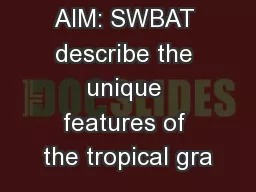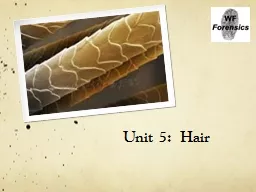PPT-AIM: SWBAT describe the unique features of the tropical gra
Author : jane-oiler | Published Date : 2015-11-03
Please Do Now What in terms of climate separates the temperate grassland from the temperate forests Agenda Do Now Begin Savanna Notes Savanna Video Return Exams
Presentation Embed Code
Download Presentation
Download Presentation The PPT/PDF document "AIM: SWBAT describe the unique features ..." is the property of its rightful owner. Permission is granted to download and print the materials on this website for personal, non-commercial use only, and to display it on your personal computer provided you do not modify the materials and that you retain all copyright notices contained in the materials. By downloading content from our website, you accept the terms of this agreement.
AIM: SWBAT describe the unique features of the tropical gra: Transcript
Download Rules Of Document
"AIM: SWBAT describe the unique features of the tropical gra"The content belongs to its owner. You may download and print it for personal use, without modification, and keep all copyright notices. By downloading, you agree to these terms.
Related Documents














